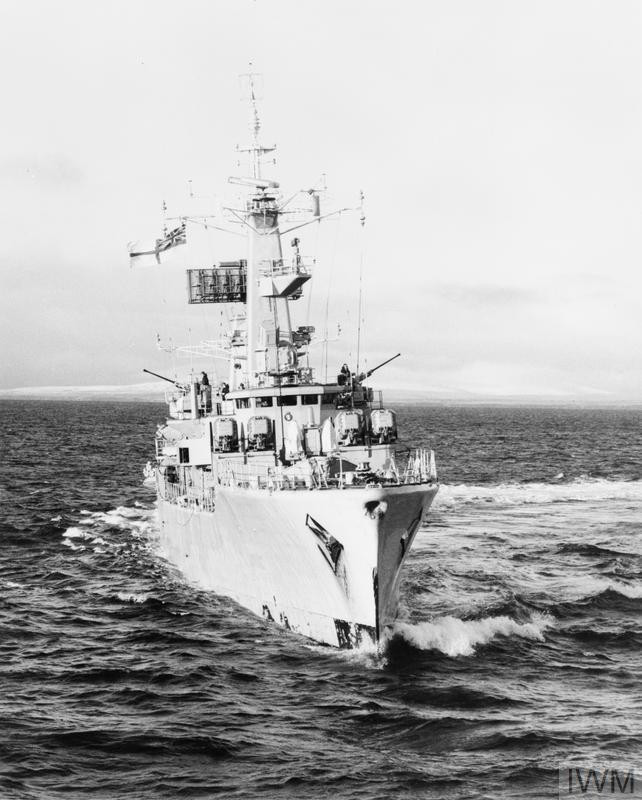A single helicopter crash at sea killed 21 British fighting men representing all three Services on Wednesday 19 May 1982.
The day had started well for the main British task group – the newly-combined Carrier Battle and Amphibious Groups – which was steaming south-west towards the eastern perimeter of the Total Exclusion Zone around the Falklands.
The need to spread troops around the flotilla, rather than keep them all in the Great White Whale – troopship Canberra, which was regarded as somewhat vulnerable – had been bothering Battle Group Commander Admiral Sandy Woodward, but an easing of the weather supplied him with the answer he needed.
In an unusual lull – unusual for the middle of the South Atlantic in the austral autumn, that is – some 1,500 men of 3 Commando Brigade, plus stores and equipment, were shuttled by landing craft and helicopters between Canberra and three warships, flagship HMS Hermes and assault ships HM Fearless and HMS Intrepid, while combat air patrols by Sea Harriers maintained a defensive screen.
While this complicated cross-decking was being carried out, the last three Sea Harriers on board STUFT (Ship Taken Up From Trade) roll-on, roll-off container ship Atlantic Conveyor were flown to aircraft carrier HMS Invincible, while the last remaining RAF Harrier GR3 flew over to Hermes.
With the weather deteriorating rapidly in the early evening, all the tasks were completed and the group continued to steam steadily westwards.
But in mid-evening disaster struck out of the blue.
A Sea King, with a crew of three and carrying 27 passengers, was flying in the pitch-black night from HMS Hermes to HMS Intrepid, while the ships were still some 200 miles out to sea from the Falkland Islands.
According to survivors, while approaching the assault ship, the helicopter was shaken by something that caused a loud bang towards the top of the aircraft. The Sea King immediately plunged some 300ft into the sea, rolled onto its side and quickly started to fill with water.
Both Naval pilots escaped, one with some difficulty, but the aircrewman, Royal Marine Cpl Michael Love, of 846 Naval Air Squadron, sustained a severe head injury in the crash (possibly from a flailing machine gun) and was discovered floating dead on the surface of the sea.
Of the 27 passengers in the cabin, 20 died – 19 Army, most of them Special Forces, and one RAF, the sole RAF casualty of the Conflict – six sustained severe injuries and one minor injuries.
A bird strike was suspected as being a major factor, particularly as the aircraft was heavily loaded for the short journey.
Back in mid-Atlantic, on 19 May a number of reinforcement ships was calling in at Ascension for a brief pitstop before continuing on to South Georgia or the Falklands, including members of the Bristol Group of warships.
Today’s image from the Imperial War Museum collection (© IWM FKD 81) shows Leander-class frigate HMS Penelope, part of the Bristol Group of warships which were off Ascension Island on 19 May 1982 as they headed towards the Falkland islands.
* These posts can only give a brief sense of what was a complex and fast-moving situation 40 years ago, and cannot cover the involvement of every ship, squadron and unit in detail – for a much more comprehensive account see the Falklands section of naval-history.net at https://www.naval-history.net/NAVAL1982FALKLANDS.htm
